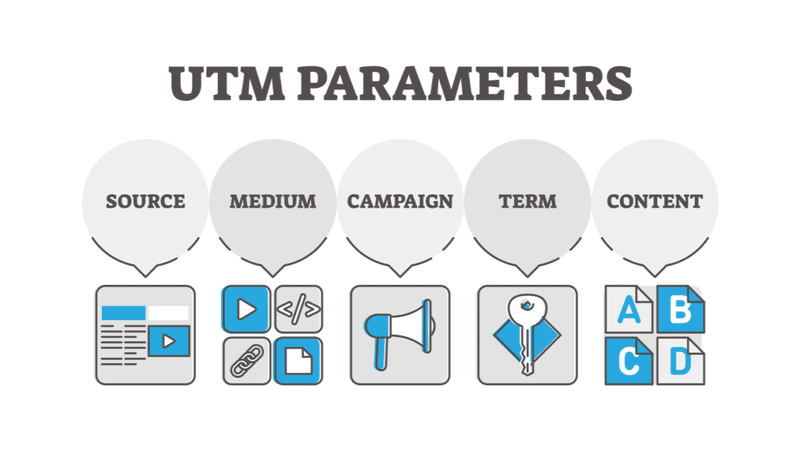Facebook Pixel Vs. Utm Parameters: Tracking And Attribution For Campaign Performance

In the digital age, effective tracking and attribution of campaign performance have emerged as vital components in the realm of online marketing. Two primary tools leveraged for this purpose include Facebook Pixel and UTM Parameters.
Facebook Pixel, a code embedded on websites, enables the tracking of conversions and optimizes ads, while UTM Parameters, tags added to a URL, help in identifying the source of web traffic.
This article aims to delve into the intricacies of these two methods, providing a comprehensive comparison of their functionalities and uses. Furthermore, it seeks to elucidate the optimal integration of these tools to enhance campaign performance.
By shedding light on practical applications through case studies, the article offers insights into the successful usage of Facebook Pixel and UTM Parameters. Understanding these tools and their strategic application can significantly contribute to the success of digital marketing campaigns.
Understanding Campaign Tracking
Campaign tracking is an essential aspect of digital marketing. It provides invaluable insights into the effectiveness of marketing strategies by monitoring and analyzing the performance of various campaigns.
Campaign tracking involves the use of specific tools and techniques to track user activity and engagement in response to marketing efforts. The primary purpose of campaign tracking is to evaluate the return on investment (ROI) of different marketing initiatives, enabling marketers to make data-informed decisions about future campaigns.
Two commonly used methods for campaign tracking are Facebook Pixel and UTM parameters. These platforms offer unique ways to monitor user interaction and measure campaign performance, ultimately enhancing the ability to attribute conversions and engagements to specific marketing activities.
Understanding the nuances of these tools is crucial for effective campaign tracking.
Deep Dive into Facebook Pixel
Diving deeper into the realm of digital marketing tools, one finds the intriguing technology of code snippets embedded on websites to monitor user behavior and optimize advertising effectiveness. This technology, known as Facebook Pixel, is a powerful tool in the arsenal of marketers and advertisers.
Facebook Pixel functions by:
- Tracking User Actions:
- Recording actions users perform on a website, such as page views, content interactions, and form submissions.
- Offering insights into user behavior and preferences, aiding in creating personalized advertisements.
- Conversion Optimization:
- Facilitating the measurement of conversions from Facebook ads.
- Enabling remarketing to people who have already interacted with a website, thus enhancing the effectiveness of advertising campaigns.
Through this technology, marketers can fine-tune their strategies and achieve optimal campaign performance.
Deep Dive into UTM Parameters
Exploring further into the domain of digital marketing tools, one encounters the intriguing concept of code snippets embedded in URL strings to monitor user interaction and optimize advertising effectiveness, a technology known as Urchin Tracking Module (UTM).
UTM parameters allow for the tracking of traffic sources, enabling marketers to understand from where their audience is originating. These parameters are added to the end of a URL, providing detailed insights about the effectiveness of various marketing campaigns.
Each UTM parameter consists of five variants: source, medium, campaign, term, and content. These variants provide information about the origin of the traffic, the type of campaign, and the specific content or keyword that attracted the user.
Utilizing UTM parameters facilitates precise data collection and analysis for effective campaign performance management.
When to Use Facebook Pixel
In the realm of digital advertising, the use of specific tools such as a certain social media site’s pixel can significantly enhance the ability to measure, optimize, and build audiences for ad campaigns. The Facebook Pixel, in particular, is a valuable tool that marketers can employ when they aim to track conversions, optimize ads based on collected data, and remarket to individuals who have already taken some kind of action on their website.
When to use Facebook Pixel:
- Conversion Tracking: The pixel allows for tracking of specific actions taken on a website after an individual interacts with a Facebook ad.
- Ad Optimization: Using the data collected, marketers can optimize their advertisements based on the actions that users are more likely to take.
- Remarketing: The pixel can be used to engage with individuals who have previously interacted with the website, enabling a more personalized ad experience.
In essence, the Facebook Pixel serves as an essential tool for precision marketing.
When to Use UTM Parameters
Shifting the focus to another significant tool in digital marketing, the use of UTM parameters emerges as a critical method for gauging the effectiveness of online advertising efforts. The application of UTM parameters is particularly advantageous for tracking specific campaign elements such as the source of web traffic, the medium through which users accessed the content, and the specific campaign that prompted user engagement. These parameters are added to the end of a URL, allowing for detailed tracking in analytics software like Google Analytics.
Here is a brief overview of the primary UTM parameters:
| UTM Parameter | Purpose | Example |
|---|---|---|
| utm_source | Identify the source of traffic | utm_source=facebook |
| utm_medium | Identify the medium | utm_medium=social |
| utm_campaign | Identify the specific campaign | utm_campaign=spring_sale |
| utm_term | Identify keywords for paid search | utm_term=running+shoes |
| utm_content | Differentiate similar content or links | utm_content=logolink |
Comparison of Facebook Pixel and UTM Parameters
Diving into the depths of digital marketing tools, a comparative analysis between the utility of social media-specific coding such as the one used by a popular social networking site and the more general Universal Transversal Mercator parameters is both valuable and enlightening.
The Facebook Pixel, a code that tracks user activity on a website, provides valuable data on conversions, remarketing efforts, and audience profiling. However, it is platform-specific, limiting its broad utility.
On the contrast, UTM parameters, which can be attached to any URL, offer a more comprehensive view of campaign performance across multiple platforms and channels. They provide valuable information about traffic sources and user behavior, but lack the depth of user profiling capabilities offered by Facebook Pixel.
Both tools, therefore, have unique strengths and limitations.
How to Integrate Both Tools for Optimal Results
Harnessing the synergistic potential of these two digital marketing tools can yield superior insights and results, by leveraging the individual strengths of each to create a comprehensive and nuanced understanding of user behavior, source of traffic, and conversion rates.
The integration of Facebook Pixel and UTM parameters can provide a more complete picture of campaign performance and user engagement.
- Facebook Pixel excels in tracking user interactions on a website, from page views to conversion events, giving a detailed view of user behavior.
- UTM parameters, on the other hand, are excellent for tracking the source of traffic, helping to identify the most effective channels and campaigns.
- By combining the data from both, it becomes possible to link specific user behaviors to particular traffic sources, improving attribution and enabling more targeted strategies.
Case Studies: Successful Usage of Facebook Pixel and UTM Parameters
Examining various case studies allows for an exploration of the successful application and potential benefits of these two digital marketing tools. One example is a notable e-commerce company that used the Facebook Pixel and UTM parameters to track the success of their advertising campaigns.
The company was able to identify the most effective ads, optimize future campaigns, and increase their return on investment. Another case study involves a large retail company that utilized these tools to track the customer journey from ad click to store visit. This data was invaluable in refining their marketing strategies.
| Company | Tools Used | Results |
|---|---|---|
| E-commerce company | Facebook Pixel & UTM parameters | Increased ROI |
| Large retail company | Facebook Pixel & UTM parameters | Refined marketing strategies |
Frequently Asked Questions
What are the basic differences between Facebook Pixel and Google Analytics?
Facebook Pixel and Google Analytics differ fundamentally in their operation. The former tracks user activities on Facebook ads, while the latter provides comprehensive web analytics data, including user behavior on a website.
How does Facebook Pixel and UTM Parameters affect the loading speed of a website?
The implementation of Facebook Pixel and UTM parameters can slightly increase a website’s loading speed due to the additional scripts that need to be processed, but this effect is typically negligible in most circumstances.
What are some common troubleshooting tips for issues with Facebook Pixel and UTM Parameters?
Common troubleshooting steps for issues with Facebook Pixel and UTM parameters include verifying correct implementation, checking for compatibility with website infrastructure, ensuring accurate parameter formatting, and utilizing diagnostic tools.
Are there any privacy concerns associated with the use of Facebook Pixel and UTM Parameters?
Indeed, privacy concerns are associated with Facebook Pixel and UTM parameters usage. They track user activities, which might lead to invasion of privacy if data collection, usage, and sharing are not managed effectively and ethically.
Which one is more cost-effective for a small business to use: Facebook Pixel or UTM Parameters?
Determining cost-effectiveness between Facebook Pixel and UTM parameters depends on a small business’s specific needs. Facebook Pixel may incur costs but offers detailed tracking, while UTM parameters are free but offer less granularity.







